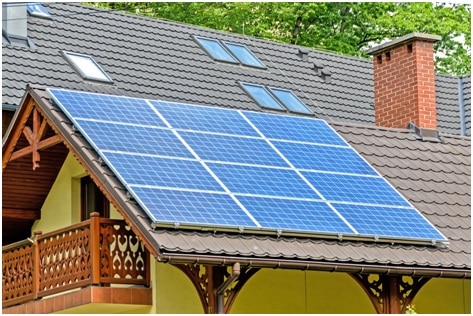The adoption of solar power lights has gained widespread popularity recently, with appreciation for their energy efficiency, cost-effectiveness, and environmental benefits. Solar lights harness sunlight to provide illumination without depending on traditional grid electricity. Whether you want to enhance outdoor lighting, reduce electricity bills, or contribute to a more sustainable future, incorporating solar power lights into your home can be rewarding and straightforward. The EcoGen America definition of sustainable living emphasizes reducing environmental impact while promoting a balanced and harmonious coexistence with nature. We will explore how to implement solar power lights effectively, discussing various types, installation considerations, and maintenance tips.
Understanding Solar Power Lights
Solar power lights, also known as solar lighting or solar-powered lighting fixtures, utilize photovoltaic (PV) cells to capture sunlight and convert it into electricity. This electricity is stored in batteries for later use, powering LED or incandescent bulbs to illuminate at night. Solar lights arrive in various forms, including solar garden lights, solar path lights, solar floodlights, and solar streetlights, each designed for specific purposes and applications.
Types of Solar Power Lights
- Solar Garden Lights
Solar garden lights enhance the beauty of outdoor landscapes, gardens, and pathways. They typically consist of a stake that can be inserted into the ground, permitting the light fixture to stand upright. Solar garden lights come in diverse styles and designs, including lanterns, decorative orbs, and path markers. They create an inviting ambiance and improve safety by lighting pathways and walkways.
- Solar Path Lights
Solar path lights are similar to solar garden lights but are primarily intended for illuminating pathways, driveways, or other areas with foot traffic. They are typically installed along the edges of paths or driveways to provide clear guidance and enhance safety during the evening hours. Solar path lights come in diverse shapes and sizes, including bollards, lanterns, and stake lights.
- Solar Floodlights
Solar floodlights are powerful outdoor lighting fixtures that emit a broad, intense beam of light. They are commonly used to illuminate larger areas such as yards, gardens, and outdoor sports facilities. Solar floodlights have high-capacity solar panels and batteries to furnish extended illumination, making them suitable for security and task lighting.
- Solar Streetlights
Solar streetlights are designed for lighting up roads, streets, parking lots, and public areas. They are equipped with bright LED or high-intensity discharge (HID) lamps to ensure adequate illumination for safety and security. Solar streetlights are typically pole-mounted and arrive with larger solar panels and battery banks to furnish consistent lighting throughout the night.
Installing Solar Power Lights
- Determine the Installation Location
The first step in implementing solar power lights in your home is identifying the installation location. Consider where you need lighting the most, whether along pathways, in the garden, around your outdoor seating area, or for security purposes. Ensure that the chosen location receives ample sunlight during the day to allow the solar panels to charge effectively.
- Select the Right Type of Solar Light
Choose the type of solar power light that suits your needs and complements your outdoor decor. Different types of solar lights are designed for specific applications, so select fixtures that link with your intended purpose and aesthetics.
- Install Solar Lights Properly
Proper installation is paramount to ensure the efficient operation of solar power lights. Follow these all-around steps for installation:
- Assemble the light fixture according to the manufacturer’s instructions.
- Position the solar panel or light fixture in the chosen location.
- Secure the fixture in place, ensuring it is stable and upright.
- If paramount, adjust the angle of the solar panel to maximize sun exposure.
- Connect any included wires or cables as directed by the manufacturer.
- Allow for Proper Sun Exposure
Solar panels require direct sunlight to charge effectively. Ensure that shadows, trees, buildings, or other obstacles do not obstruct the solar panels on your lights. Position the lights in areas where they can acquire several hours of direct sunlight daily to ensure optimal charging and nighttime performance.
Implementing solar power lights in your home is a practical and environmentally conscious way to enhance outdoor lighting, reduce energy costs, and contribute to sustainability. Whether you choose solar garden lights, path lights, solar floodlights, or solar streetlights, these fixtures offer numerous benefits, including energy efficiency, cost savings, and low maintenance requirements. By following proper installation and maintenance practices, you can enjoy the advantages of solar power lights while illuminating your outdoor spaces responsibly and efficiently. Solar lighting not only brightens your home but also shines a light on a more sustainable future for all.
